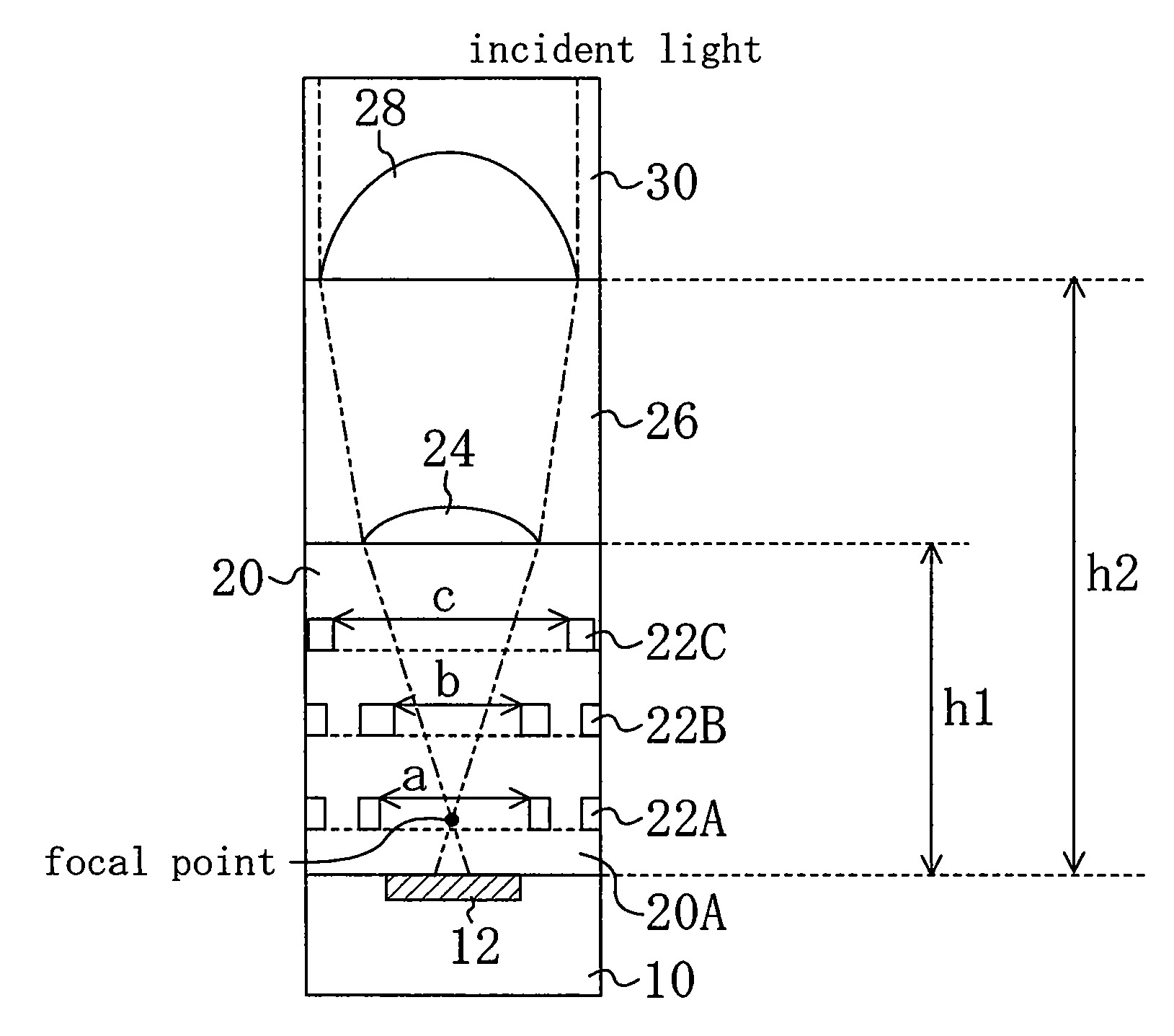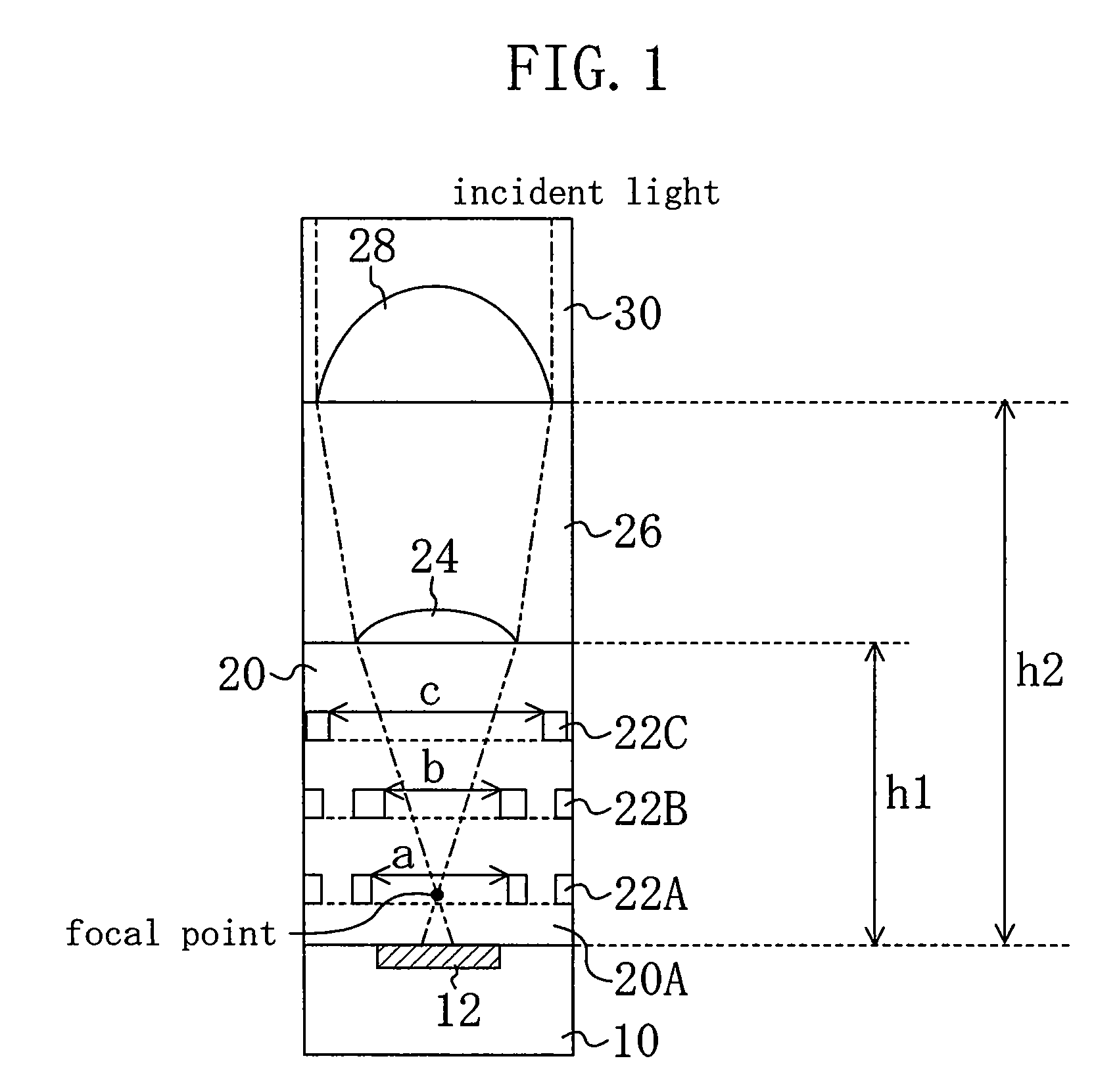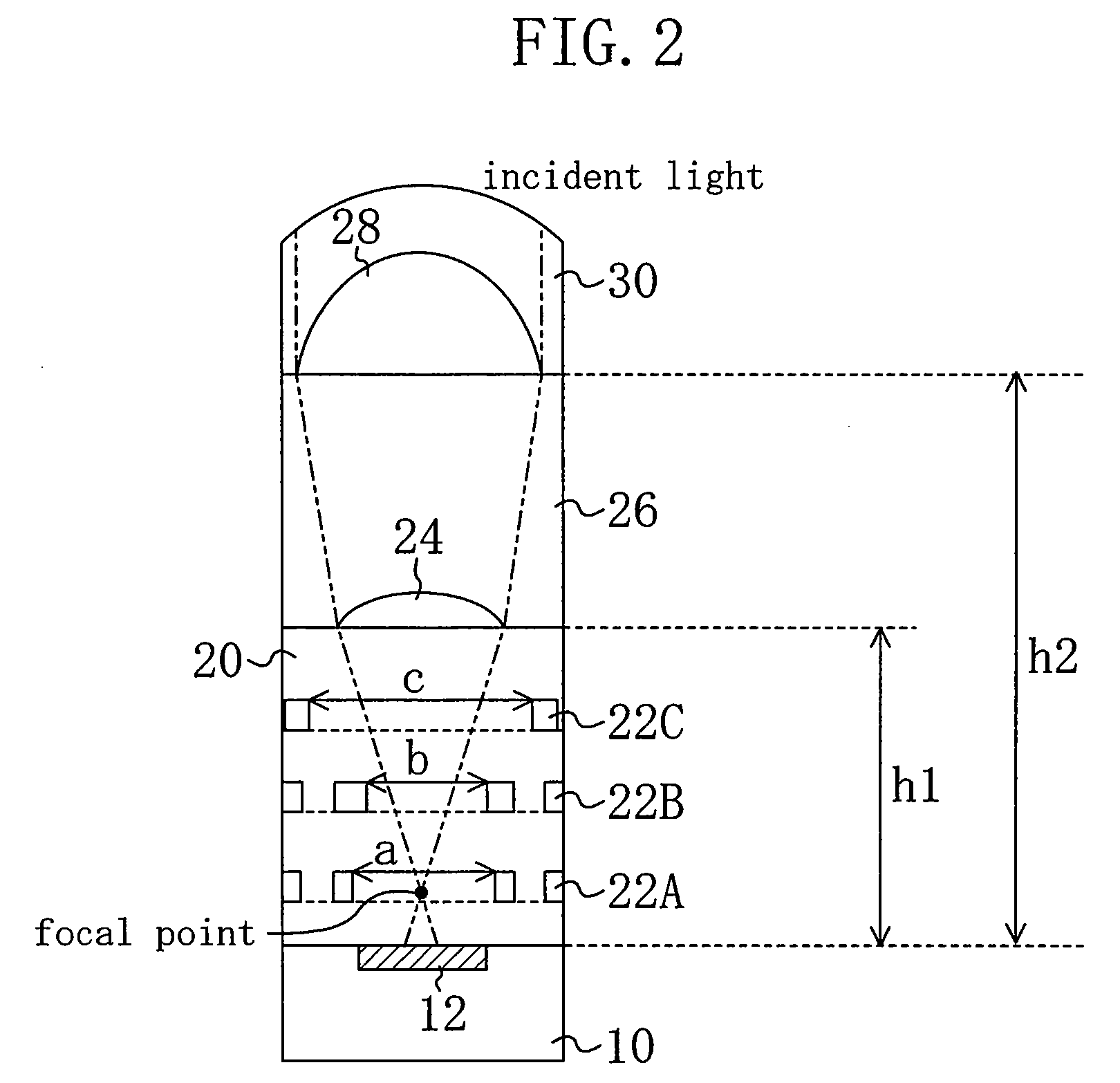Solid-state imaging device and method for fabricating the same
a solid-state imaging and imaging device technology, applied in the direction of radiological control devices, instruments, television systems, etc., can solve the problems of difficult to obtain a lens curved face having a smooth and uniform shape after heat flow, and the sensitivity is reduced as compared, so as to achieve high light receiving efficiency and great thickness
- Summary
- Abstract
- Description
- Claims
- Application Information
AI Technical Summary
Benefits of technology
Problems solved by technology
Method used
Image
Examples
embodiment 1
Variation of Embodiment 1
[0093]Next, with reference to FIGS. 10 and 11, detailed descriptions will be given of a solid-state imaging device (MOS image sensor) according to a variation of Embodiment 1.
[0094]FIGS. 10A and 10B are views showing longitudinal sections respectively along the horizontal direction and the diagonal direction of part of a pixel of a MOS image sensor according to the variation of Embodiment 1. FIGS. 11A, 11B, and 11C are plan views respectively showing an interconnect pattern of the first layer, an interconnect pattern of the second layer, and an interconnect pattern of the third layer of part of the pixel of the MOS image sensor according to the variation of Embodiment 1. Here, as a rule, “diagonal direction” means, in the case where the imaging area is a quadrilateral in a plan view, a diagonal direction of the quadrilateral.
[0095]In the MOS image sensor of FIG. 1 according to Embodiment 1, in longitudinal sections taken along any direction, the focal positi...
embodiment 2
[0108]FIG. 14 is a cross-sectional view showing part of a pixel of a MOS image sensor according to Embodiment 2 of the present invention. In the figure, members which are the same as those in the MOS image sensor of FIG. 1 of Embodiment 1 are denoted by the same reference numbers as those in FIG. 1.
[0109]As shown in FIG. 14, the MOS image sensor of the present embodiment is different from the MOS image sensor of Embodiment 1 in that a lower face of an inner-layer lens 25 is downward convex (is concave).
[0110]In this case, a distance h3 between an upper face of the semiconductor substrate 10 and the inner-layer lens 25 is substantially the same as the distance h1 of the MOS image sensor of Embodiment 1. However, a distance h4 between the upper face of the semiconductor substrate 10 and the top lens 28 can be smaller than the distance h2 of the MOS image sensor of Embodiment 1.
[0111]The reason for this is that if an upper face of the inner-layer lens is convex, the inner-layer lens 24...
PUM
 Login to View More
Login to View More Abstract
Description
Claims
Application Information
 Login to View More
Login to View More - R&D
- Intellectual Property
- Life Sciences
- Materials
- Tech Scout
- Unparalleled Data Quality
- Higher Quality Content
- 60% Fewer Hallucinations
Browse by: Latest US Patents, China's latest patents, Technical Efficacy Thesaurus, Application Domain, Technology Topic, Popular Technical Reports.
© 2025 PatSnap. All rights reserved.Legal|Privacy policy|Modern Slavery Act Transparency Statement|Sitemap|About US| Contact US: help@patsnap.com



